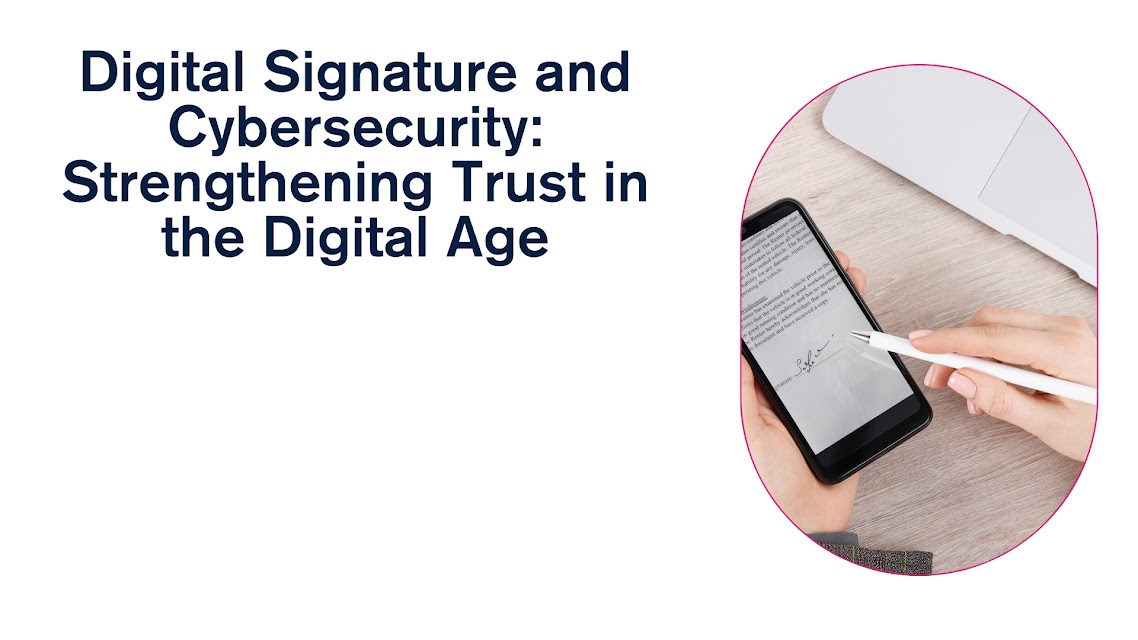In a world where digital technologies are at the heart of nearly every transaction, cybersecurity has evolved from a technical issue into a critical business priority. Whether it’s online banking, digital government services, or remote collaboration, the dependence on digital infrastructure has surged. With this rise comes an urgent need for secure, authenticated, and tamper-proof digital communication. This is where digital signature online emerges as an essential security measure, combining cryptography and identity verification to reinforce trust.
This article explores how online digital signatures are shaping a safer digital future by securing data, preventing cyber fraud, and supporting trusted online interactions.
What Are Digital Signatures and How Do They Work?
Digital signatures are advanced cryptographic mechanisms that confirm the authenticity and integrity of electronic documents and messages. Powered by Public Key Infrastructure (PKI), they allow recipients to verify that the content is genuine and unaltered.
How It Works:
- Signing: The sender applies a digital signature using their private key, which encrypts a unique digital fingerprint (hash) of the document.
- Verification: The recipient uses the sender’s public key to decrypt and validate the signature. If the content has been changed or the sender’s identity is falsified, the verification will fail.
Steps to Apply for a Digital Signature Certificate (DSC) Online
Step 1: Visit the Website
Start the process by navigating to our official portal.
Step 2: Fill in the Application Details
- User Type: Choose between individual or organizational use.
- Certificate Type: Select a signing-only or signing-and-encryption certificate.
- Validity Period: Choose your desired validity (typically 1–3 years).
- Personal Info: Provide your full name, mobile number, email address, and residential details.
- Terms Agreement: Accept the terms and conditions and submit the form.
Step 3: Choose USB Token Option
If you already have a token, select “No.” Otherwise, select “Yes” to request one.
Step 4: Make the Payment
Choose a preferred payment method—debit card, credit card, UPI, or net banking—and complete the transaction.
Step 5: Finalize and Submit
Double-check your details, submit the application, and wait for confirmation.
Step 6: Receive Your Digital Signature
After processing, you’ll receive your DSC on a secure USB token device.
How Digital Signatures Strengthen Cybersecurity
- Maintaining Data Integrity
Digital signatures ensure that documents or messages are unchanged from their original version. This is critical for financial reports, legal agreements, and confidential files. - User Authentication
They confirm the identity of the sender, making it difficult for attackers to impersonate trusted sources. - Non-Repudiation
Once a document is signed digitally, the sender cannot deny having signed it. This assurance is valuable in legal and financial transactions. - Regulatory Adherence
Digital signatures align with major data security and compliance frameworks, including:
- eIDAS (EU)
- Information Technology Act (India)
- ESIGN Act (USA)
These standards establish the legal validity of digitally signed documents.
Digital Signatures and Cyber Threat Prevention
- Defense Against Man-in-the-Middle Attacks
They confirm the sender’s identity and protect content from being intercepted or modified during transmission. - Email Spoofing Protection
Digitally signed emails help recipients verify the true sender, reducing the risk of phishing. - Prevention of Document Forgery
Any attempt to edit a digitally signed document will invalidate the signature, alerting the recipient. - Tamper Alerts in Data Breaches
If unauthorized changes are made, the corrupted data will no longer pass signature verification.
Practical Applications of Digital Signatures
- Banking & Finance
Used in online loan processing, digital KYC, and account verification, enabling secure and fast transactions. - Healthcare Sector
Digital signatures secure electronic health records (EHRs), prescriptions, and diagnostic reports, ensuring data privacy. - Legal Industry
Legal documents such as contracts, affidavits, and agreements are increasingly being signed and submitted digitally. - Public Sector & Governance
From income tax e-filing to digital identity services, DSCs are integral to various e-governance platforms. - E-Commerce and Online Platforms
Digital signatures confirm transaction authenticity and help prevent fraud, building trust with customers.
Technology Driving Digital Signatures
- Public Key Infrastructure (PKI)
A two-key system—public and private keys—ensures secure encryption and verification processes. - Hashing Algorithms
Documents are hashed before signing, and any change in the file will generate a completely different hash, making tampering detectable. - Digital Timestamps
Adding timestamps allows proof of when a document was signed, providing traceability and audit readiness.
Why Digital Signatures Are Critical to Cybersecurity
- Strengthen Trust in Digital Transactions
They offer confidence in the legitimacy of documents and communications. - Support Paperless Systems
Reduce reliance on physical paperwork, promoting environmental sustainability and operational speed. - Lower Operational Costs
No printing, shipping, or in-person verification is needed, saving businesses time and money. - Enable Secure Remote Operations
Ideal for virtual workspaces where documents and transactions need to be handled securely from anywhere.
Emerging Trends in Digital Signature Technology
- Integration with Blockchain
Combining blockchain and digital signatures enhances document security, identity verification, and even online voting systems. - AI-Based Fraud Detection
Artificial intelligence can identify anomalies in signing behavior, offering advanced threat detection. - Quantum-Resistant Cryptography
Next-generation algorithms are being developed to withstand the potential risks posed by quantum computing.
Best Practices for Secure Use of Digital Signatures
- Use strong and unique passwords for DSC tools and software.
- Never share your private key or token with anyone.
- Keep your DSCs valid by renewing them before expiration.
- Back up keys and secure them from physical or digital theft.
- Rely only on Certified Authorities (CAs) to issue trusted DSCs.
Also read:- What is emudhra?
Conclusion
Digital signatures are not just a cybersecurity feature—they are a cornerstone of digital trust and governance. As more interactions shift online, the ability to verify identity, protect information, and establish legal validity becomes essential.
Whether you’re part of a startup, a multinational corporation, or a government department, embracing digital signatures will not only help safeguard your operations but also build long-term confidence with stakeholders. In today’s rapidly evolving cyber landscape, they are indispensable tools for secure, compliant, and trustworthy communication.

